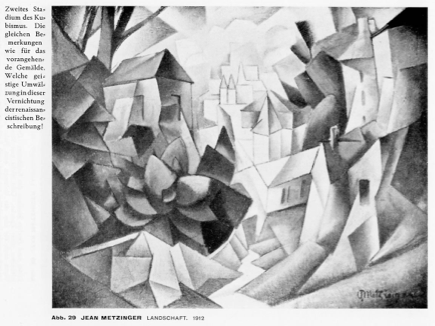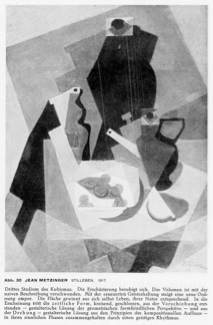Back to item index
Previous (Louis Marcoussis)
Jean Metzinger

28. Jean Metzinger: Landscape, 1911
First and second phase of Cubism. This picture, dating from 1911, is one of the finest of that epoch. Here there is not just promise, but also fulfilment. Even if we can see that the painter still has the idea of volume, and that, from the start, he has taken the unifying and centralising perspective into account, we are still obliged to admit that, already, these concepts are beginning to lose their meaning, giving way before the appearance of new aims in painting. In this canvas, we can feel the multiplicity of the perspective points; the dominance of the flat surface; its ability, by means of translation and rotation, to assume a dynamic life; the coming together in a common rhythm and, already, the fact that everything is organised within the limits of the picture space. In particular, the way in which the colour has been applied gives the overall impression of a grey, achieved through the combination of all the colours of the spectrum.

29. Jean Metzinger: Landscape, 1912
Second phase of Cubism. The same observation may be made as for the previous picture. What a spiritual revolution has been accomplished through this denial of the descriptive principles of the Renaissance.

30. Jean Metzinger: Still Life, 1917
Third phase of Cubism. The initial, shocking phase of Cubism settles down. The volume has vanished. With a new state of mind, a new order begins to appear. The surface assumes its own life, a life which corresponds to its own nature. The form which is based on time appears - circular, closed, originating from translation - the plastic resolution of their geometrical, non-figurative use of perspective - and from rotation - the plastic resolution of the principles of compositional construction. In its successive phases as they are experienced through the senses, it is held together by a rhythm, which is, in its own nature, spiritual.